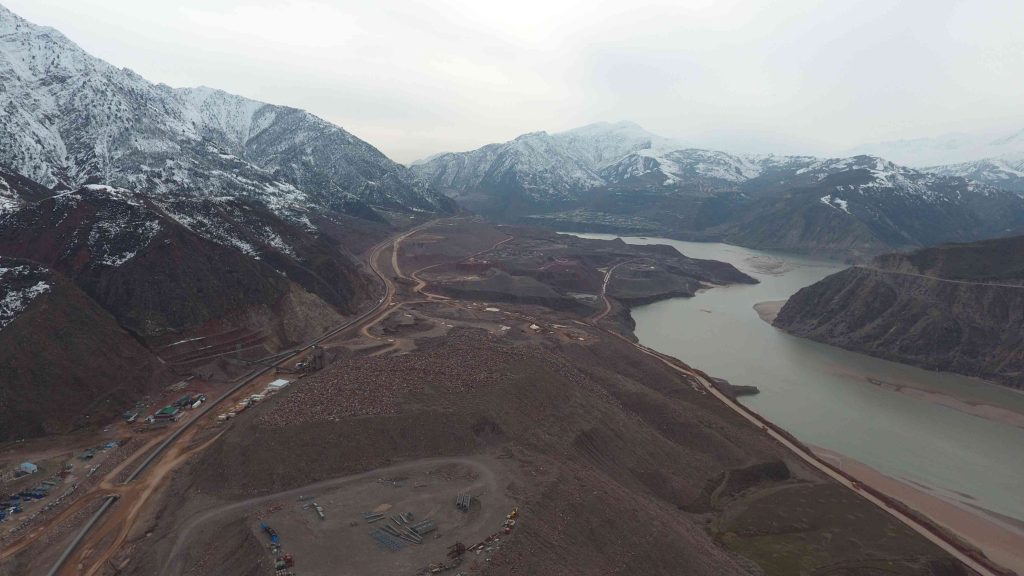In 2014 the Human Rights Watch reviewed early resettlement from Rogun reservoir bottom and highlighted issues such as lack of access to land for farming and raising livestock, reduced access to and variety of food, loss of income-generating activities, unreliable and inadequate access to basic services, and lack of fair or adequate compensation.
In 2024 the dam project documentation downplays and neglects diverse and problematic consequences of resettling 50-60 thousand people, which will inevitably have massive environmental and social impacts. All the more so in a society with few political and individual freedoms, low levels of transparency, the highest level of corruption, and exacerbating human rights violations. In such circumstances, the fact that at least 7297 people have been already displaced and 53,000 are still expected to be resettled should be a red flag for IFIs. See table below for resettlement figures for different options of dam height.
|
Reservoir options: normal water level ( meters above sea level) |
Number of people to be resettled (spring 2024 data-approximation) |
Clarification |
|
1290 |
50,000 -60,000 |
“The highest dam in the world”. New resettlement policy says that up to 6000 will be resettled (counting newborn babies). Part of this resettlement happens at higher altitudes due to reservoir-induced landslides . |
|
1255 |
22,000 |
Medium-height option refuted in the ESIA |
|
1220 |
12,500 |
Lowest option refuted in the ESIA |
|
1189 |
7,900 |
“Phase I” dam height planned for 2029. One village left unresettled after RAP2 |
|
1110 (it was 1070 in 2024) |
7,300 |
Level to be reached in 2025-26. Here we sum up all people already resettled by end 2024 |
At the end of 2023 the resettlement figure was 46,000, in early 2024 it changed to 50,000 people. After the CSOs’ inquiries at June 6 public hearings, in late June 2024, the new draft resettlement policy acquired a vague footnote: “It is possible that the final count of project affected people could be up to 60,000 to take account of population growth”. This note demonstrates that the project proponents and their consultants have no clear understanding of potential resettlement numbers, demographic situation and needs of local communities in reservoir area. Experience from the Three Gorges Hydro in China and other large dams shows that resettlement numbers can easily double in the course of resettlement due to poor accounting and unanticipated scale of reservoir shore erosion and downstream impacts.
In addition, the Rogun HPP Project documentation fully neglects impacts on communities downstream from the Vakhsh hydropower cascade who reside along Amu-Darya River and depend on its water flow. The Resettlement Framework fails to explain what compensation procedure is available to people downstream of Vakhsh Casacade in Turkmenistan, Afghanistan and Uzbekistan in case they will be negatively affected by water shortages or failure of the Rogun Dam.
More detailed analysis: Converting Lives into Kilowatts. Analytical Note, Comments and Recommendations on the Rogun HPP Resettlement Documentation: RAP-2 and LRP-2 (October 2025)
Related documents:
-
Human Rights Watch | “We Suffered When We Came Here: Rights Violations Linked to Resettlements for Tajikistan’s Rogun Dam” (June 2014)
-
Resettlement Framework Consultations Critique 4 July 2024
- Analysis of the Draft Resettlement Framework and belated response from the World Bank. August 2024
-
The Human Cost of the Rogun Hydropower Project: A Crisis in the Making



